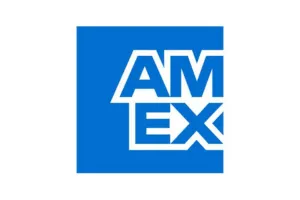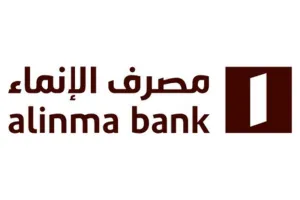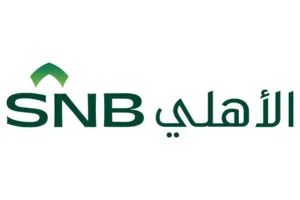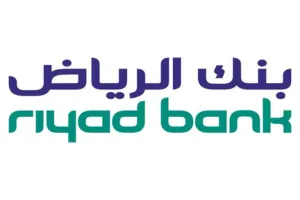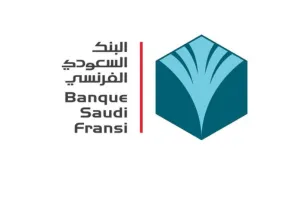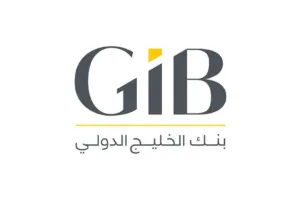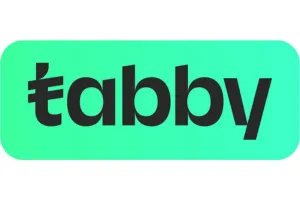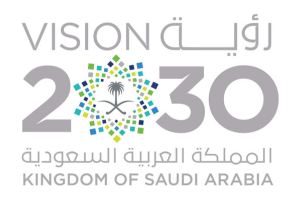Feasibility study of a green hydrogen production plant
Establishing an integrated plant to produce green hydrogen using water electrolysis technology, relying on renewable energy sources such as solar and wind energy. The plant contributes to supporting the shift towards clean energy and reducing carbon emissions, which enhances the realization of the Saudi Vision 2030 targets in the field of sustainable energy.
Study content
Rationale for choosing the project
The global trend toward clean energy and carbon neutrality
The world is witnessing a major shift towards clean energy sources, with many countries adopting plans to reduce dependence on fossil fuels and minimize greenhouse gas emissions.
The Kingdom has committed to achieving carbon neutrality by 2060 as part of the Saudi Green Initiative, making green hydrogen one of the key solutions to support this goal.
The European Union, the United States, China and other countries are seeking to expand the use of green hydrogen as a sustainable fuel, opening up huge export opportunities.
Availability of natural resources ideal for green hydrogen production
Saudi Arabia has vast solar and wind resources, making it capable of producing green hydrogen efficiently and cost-competitively.
The presence of vast areas that can be used to build the renewable energy plants needed to operate water electrolysis plants.
The availability of treated water and desalinated salt water makes the production of green hydrogen more sustainable without affecting fresh water resources.
Growing demand for green hydrogen locally and globally
The global demand for green hydrogen is increasing for use in multiple sectors such as transportation, heavy industry, electricity generation, petrochemicals, and green ammonia production.
The global hydrogen market is expected to reach trillions of dollars by 2050, making investment in this sector a major economic opportunity.
Locally, the Kingdom is promoting the use of hydrogen in industrial sectors and future projects such as NEOM City, which aims to become a global hub for green energy production.
Boosting the national economy and industrial diversification
The project contributes to achieving the goals of Saudi Vision 2030 by diversifying sources of income and reducing dependence on oil.
Creating new job opportunities in the technical and engineering sectors, boosting economic development and providing highly skilled jobs for citizens.
Attracting local and foreign investments, as green hydrogen is a strong investment opportunity in the clean energy sector.
Reducing carbon emissions and achieving environmental sustainability
Green hydrogen is one of the most effective solutions to reduce carbon emissions in heavy industries whose emissions are difficult to reduce, such as the steel and cement industry.
It helps reduce dependence on fossil fuels, which improves air quality and minimizes negative environmental impacts.
The project contributes to achieving the goals of the Carbon Circular Economy Initiative, which aims to reduce, reuse and store carbon.
Supporting green hydrogen export projects to global markets
The Kingdom’s strategic location allows it to easily export green hydrogen to Europe and Asia, where there are plans to establish specialized ports for the export of clean energy.
Partnerships with countries and major companies interested in investing in green hydrogen, which enhances opportunities to expand into international markets.
Plans to establish hydrogen pipeline networks and the necessary infrastructure to facilitate export and local distribution.
Benefit from government incentives and supportive initiatives
The Saudi government provides significant support for renewable energy and green hydrogen projects through programs such as the Public Investment Fundand the Renewable Energy Development Authority.
Tax exemptions and investment incentives to attract local and international companies to invest in the sector.
Plans to develop clean energy infrastructure, including the establishment of industrial zones specialized in hydrogen production.
Investment advantages
Global demand for green hydrogen is on the rise
The green hydrogen market is expected to grow significantly over the coming decades as countries move to reduce dependence on fossil fuels and achieve carbon neutrality.
The European Union, Japan, South Korea, and the United States are investing billions of dollars in developing the hydrogen economy, boosting export opportunities.
Sectors such as heavy transportation, aviation, petrochemicals, steel production, and electricity generation are increasingly relying on green hydrogen as a sustainable fuel.
Supportive investment environment and government incentives
The Saudi government provides investment incentives, including tax exemptions, financial support, and licensing facilities for renewable energy projects.
Government initiatives such as Saudi Vision 2030, the Saudi Green Initiative, and the Carbon Circular Economy support green hydrogen projects.
Investors can benefit from government funding through the Public Investment Fund, the Saudi Industrial Fund, and the National Development Fund.
Low production costs thanks to natural resources
The Kingdom has some of the highest levels of solar radiation in the world, allowing for low-cost production of renewable electricity.
The availability of strong wind power in areas such as Neom and the Red Sea reduces the cost of operating electrolysis plants to produce hydrogen.
The Kingdom’s privileged geographical location facilitates exports to European and Asian markets through nearby sea ports.
Strong investment returns and sustainable growth
Investing in green hydrogen has high rates of return over the long term, as demand grows and production technologies improve.
Additional returns can be realized through the sale of Green Certificates to companies and countries looking for clean energy solutions.
Projections indicate that the cost of producing green hydrogen will drop by 50% by 2030, increasing the profitability of the project.
Diversified revenue streams
Green hydrogen can be sold to power plants, chemical industries, refineries, steel manufacturers, and the heavy transportation sector.
The possibility of producing green ammonia, which is a key product in the fertilizer industry and can be exported to global markets.
Developing liquid hydrogen projects for use as a clean fuel in airplanes, trucks, and ships.
Capitalizing on future infrastructure projects
The Kingdom is developing a hydrogen pipeline network to connect production centers to ports and industrial consumers.
Plans to establish hydrogen storage centers and refueling stations for hydrogen-powered vehicles, opening up additional local markets.
Collaboration with global projects such as the NEOM Green Hydrogen Project makes Saudi Arabia a global hub for hydrogen production and export.
Promote sustainability and environmental responsibility
Investing in this project boosts a company’s ESG (Environmental, Social, Governance)rating, attracting international investors.
Supporting the Paris Climate Agreement by reducing carbon emissions in the industrial and transportation sectors.
Improving the reputation of investors and shareholders by participating in projects that support the green economy.
Job creation and human capital development
The project will create high-quality jobs in the fields of engineering, technology, renewable energy, and chemical industries.
Contribute to the transfer of knowledge and technology to the local market, thereby enhancing the development of the clean energy sector in the Kingdom.
Supporting training and qualification programs in universities and technical institutes to enable Saudi youth to enter the hydrogen sector.
Potential for strategic partnerships with major international companies
The interest of major international companies such as Air Products, Siemens Energy, Toyota, and Shell in investing in hydrogen projects provides strong partnership opportunities.
The possibility of signing long-term offtake agreements with global consumers, ensuring revenue stability.
Strengthening trade relations with European and Asian markets through export agreements for green hydrogen and green ammonia.
Minimizing investment risks thanks to government support and global trends
The Kingdom’s policies encourage investment in clean energy, minimizing legislative and regulatory risks.
Growing markets for green hydrogen ensure stable demand and steady returns.
Ongoing infrastructure projects such as hydrogen export ports and the expansion of the renewable energy grid contribute to the success of the project.
Demand analysis
1. Growing global demand for clean energy
continued growth: With a growing focus on addressing climate change, major industrialized nations are racing to reduce carbon emissions, and green hydrogen is a clean fuel that can replace fossil fuels in many applications.
Strategies of countries: The European Union aims to produce 10 million tons of green hydrogen per year by 2030, and China and Japan have developed national plans to increase their reliance on hydrogen.
Corporate commitments: Major companies such as Shell, BP, Toyota, and Air Liquide are beginning to invest heavily in hydrogen projects, reflecting their confidence in the growth of this market.
2. Domestic demand in Saudi Arabia
Megaprojects: Projects such as NEOM plan to be a global hub for green hydrogen production, creating significant local demand to support these projects.
Heavy industry: Major Saudi companies such as SABIC and Aramco are moving to use hydrogen in their operations to reduce their carbon footprint, increasing local demand.
Transportation sector: Plans to develop hydrogen-powered transportation networks in the Kingdom, especially in trains and trucks, boosting demand for green hydrogen.
3. Diversified applications that increase the comprehensiveness of demand
Industry: Green hydrogen is used in the production of green steel, which is increasingly needed as a low-carbon alternative to conventional steel.
Energy: Hydrogen can be easily stored and transported, making it an ideal solution for storing renewable energy and using it when needed.
Transportation: Increasing interest in hydrogen fuel cell vehicles as an alternative to traditional electric vehicles, especially in the heavy-duty transportation and aviation sectors.
Electricity: Use in clean power plants to stabilize the electrical grid during periods of low renewable energy production.
4. Future growth outlook
Global market: The global hydrogen market is expected to reach around $11 trillion by 2050, with a CAGR of 10-12%.
Prices: With technological advances, the cost of producing green hydrogen is expected to drop by up to 50% by 2030, making it more competitive compared to fossil fuels.
Infrastructure: Develop an integrated infrastructure for transportation and distribution of hydrogen, making it easier for end users to rely on it.
5. Risks and challenges affecting demand
Technology: Need to develop more efficient electrolysis technologies to reduce costs and increase productivity.
Policies: Changes in government policies on clean energy subsidies may affect market stability.
Competition: The continued development of other energy technologies such as electric batteries may limit some applications for green hydrogen.
Financial indicators
Investment cost of the project
Total expected capital: SAR 3,000 – 5,600 million.
Projected Annual Revenue
Total annual revenue: SAR 1,300 – 2,250 million.
Profitability and Return on Investment (ROI)
Expected profit margin: 25% – 40%.
Return on Investment (ROI): 10% – 15% per year.
Payback period: 7 – 10 years depending on operating efficiency and demand.
Features of the project
Economic advantages
Growing global demand: There is a growing demand for green hydrogen from major industrialized countries such as Germany, Japan, and South Korea, providing huge export opportunities.
High return on investment: The project has profit margins of 25%-40% and an internal rate of return (IRR) of 12%-18%.
Leveraging Saudi infrastructure: Saudi Arabia is investing heavily in renewable energy projects and infrastructure, facilitating production and export.
Government support and concessional financing: The Saudi government offers tax exemptions, grants, and soft loans for clean energy projects, reducing investment costs.
Strategic advantages
Ideal geographic location for export:
Saudi Arabia’s proximity to European and Asian markets makes it a strategic hub for exporting green hydrogen.
The development of logistics projects such as NEOM Green Hydrogen enhances transportation and distribution efficiency.
A pivotal role in Vision 2030:
The project is in line with the Kingdom’s goals to become a global clean energy hub.
Saudi Arabia aims to export 4 million tons of green hydrogen annually by 2030.
Integration with renewable energy projects:
The plant can be directly connected to solar and wind power plants, ensuring a low cost of energy.
Exploiting the abundance of sunny desert land and the Red Sea coastline for wind boosts production capacity.
Environmental and sustainability benefits
Reduced carbon emissions:
Green hydrogen helps reduce CO2 emissions compared to gray hydrogen.
Supports the carbon neutrality goals sought by Saudi Arabia and the world by 2050-2060.
Supports a circular carbon economy:
The project contributes to the transition towards a low-carbon economy and reduces dependence on fossil fuels.
Captured carbon from other plants can be used to boost the production of methanol and green ammonia.
Achieving ESG (Environmental, Social and Governance) standards:
The project can attract investments from global clean energy funds interested in sustainable projects.
Meeting the standards of the World Bank and green financial institutions enhances opportunities for low-cost financing.
Technical and Competitive Advantages
Leadership in technology and innovation:
Utilizing the latest electrolysis technologies reduces production costs by up to 30% by 2030.
Integrating artificial intelligence and the Internet of Things (IoT) increases production efficiency and improves quality control.
Diversification of end products:
Hydrogen can be sold as a clean fuel for transportation and industry.
Hydrogen can be converted into green ammonia for easy storage and export.
Production can be integrated with heavy industries such as green steel and green fertilizers.
Low cost of production in the future:
The cost of producing green hydrogen is expected to drop to SAR 5-7 per kilogram by 2030.
The use of abundant renewable energy sources reduces the cost of operation in the long term.
Operational and management advantages
Operational flexibility:
The possibility of gradually expanding production according to local and international demand.
Utilization of multiple energy sources (solar, wind, or excess electricity from the grid).
Employing local talent:
Providing high-tech job opportunities for Saudis in the fields of engineering, renewable energy, and logistics.
Ability to collaborate with universities and research centers to develop innovative solutions.
Easy access to funding:
International financial institutions such as the European Investment Bank (EIB) and the Saudi Public Investment Fund (PIF) support green hydrogen projects.
Access to strategic partnerships with global renewable energy companies.












